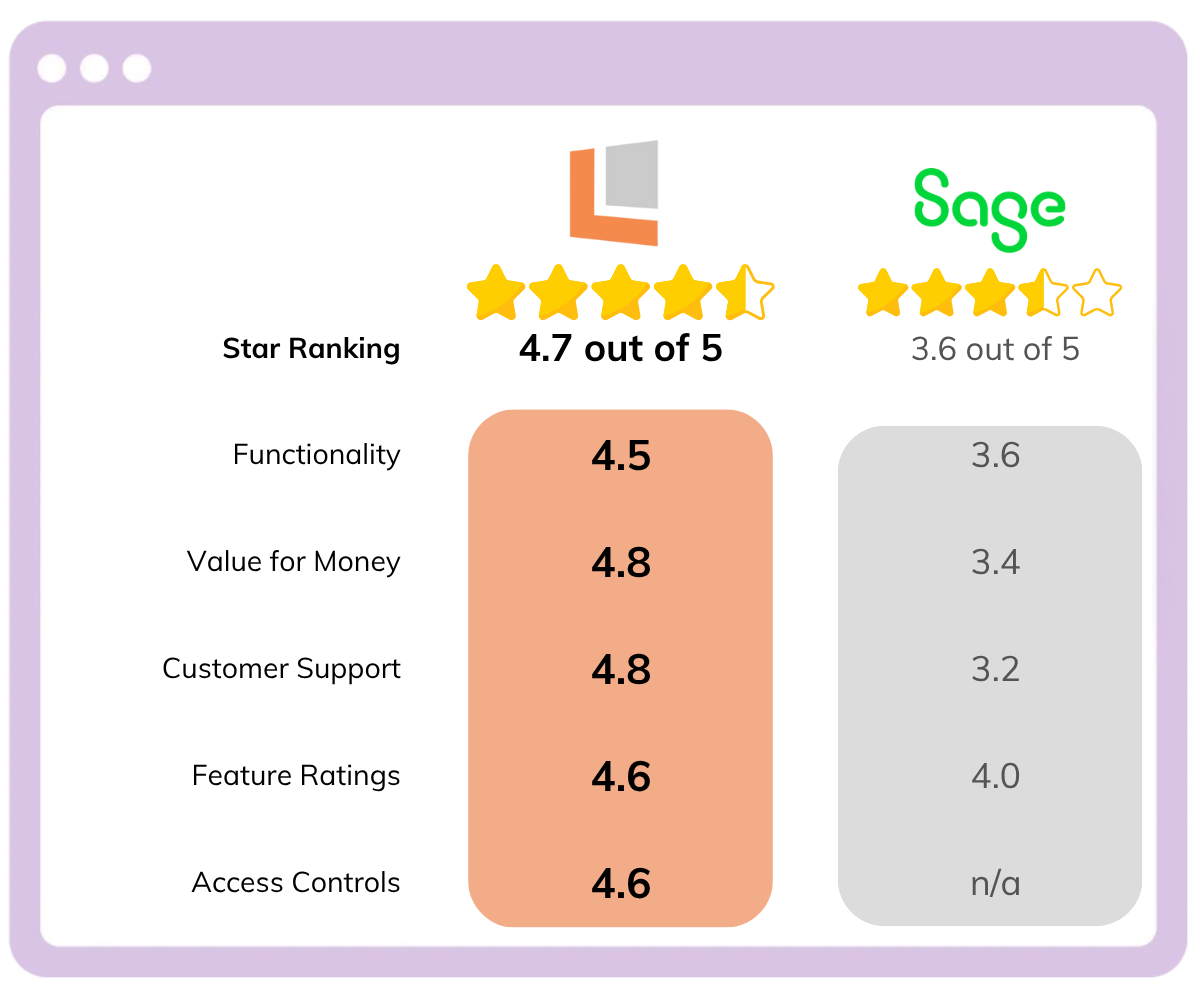Sage HRMS vs Lanteria HR: Which Platform Fits a Modern, Growth-Focused HR Team?
Need the quick verdict? If your organisation already lives in Microsoft 365/SharePoint and you want cloud-ready automation across Core HR, Talent, Performance, Learning and Analytics, Lanteria HR is the clear winner. Keep reading for the full breakdown, plus a link to our in-depth comparison page that you can share with stakeholders.
1. Overview of Each Platform
| Feature |
Lanteria HR |
Sage HRMS |
| Core positioning |
All-in-one HRMS built natively for Microsoft 365, SharePoint, Teams and Power BI |
Complete HRMS that began as an on-premise suite; cloud hosting available through partners |
| Deployment |
Flexible: on-premise or Microsoft Azure shared/private cloud |
Primarily on-premise; optional third-party cloud hosting |
| Modular scope |
Core HR, Recruiting & Onboarding, Time & Attendance, Performance, Learning, Reporting/BI, Self-Service, Mobile |
Core HR, Payroll, Benefits, Time & Attendance, Recruiting, Self-Service |
| Integrations |
Deep Microsoft stack (SharePoint, Teams, AD, Outlook) + Zapier, DocuSign, ZipRecruiter, Go1 and more |
Native tie-ins to Sage 100/300 Payroll; limited ecosystem outside Sage |
| Security |
Built on Microsoft security standards; Azure hosting options |
Enhanced Windows account-policy security (2025 update) |
| User self-service |
Employee & Manager portals, mobile app, role-based permissions |
Modern employee & manager self-service portal |
2. Five Areas Where Lanteria Pulls Ahead
2.1 Microsoft-Native Experience
Because Lanteria is architected inside SharePoint/Office 365, HR data stays in the same tools your workforce already trusts—Outlook, Teams, Power BI—reducing change-management friction and IT overhead.
2.2 End-to-End Automation & Workflow Builder
Lanteria’s drag-and-drop workflow engine automates approvals, notifications and document generation across hiring, reviews, and time-off—saving customers up to a week per month in manual tasks.
2.3 Built-In Learning Management & Career Pathing
While Sage HRMS covers training tracking, Lanteria layers a full LMS with LinkedIn Learning & Go1 content, personal learning plans and competency-based development—critical for skills-first talent strategies.
2.4 Real-Time Analytics in Power BI
Out-of-the-box dashboards plus native Power BI connectors let HR and finance slice attrition, diversity and cost data instantly—no exports required. Sage offers robust reports but lacks the same Microsoft BI deep link.
2.5 Flexible Cloud or On-Premise Choice
Need private Azure, a shared Microsoft tenant, or keep data on-site? Lanteria supports all three. Sage HRMS relies on partner hosting or your own servers, adding cost and complexity.
3. Where Sage HRMS Still Shines
- Native Sage payroll integration – ideal if you already run Sage 100/300 payroll modules.
- US & Canada compliance tooling – pre-built ACA, tax and SDI code updates released each quarter.
- Long history in on-premise HR – proven for organisations with strict data-sovereignty policies.
4. ROI Snapshot
- Planning accuracy ↑ 90 % after moving to Lanteria HR (customer survey).
- Self-service adoption ↑ 95 %, freeing HR teams to focus on strategy.
- Typical implementation pays back in <12 months thanks to saved admin hours and reduced third-party tools.
5. Recommended Next Steps
- See the detailed feature checklist on our dedicated Lanteria vs Sage HRMS page and share it with finance & IT for due diligence.
- Book a hands-on demo to map your current processes to Lanteria workflows.
- Start small—enable Core HR + Self-Service, then phase in Recruiting, Performance and LMS as quick-win sprints.
- Use internal links from this blog (and others) to strengthen the authority of the comparison page and accelerate its climb from position 56.
Looking for the full feature matrix? Read our comprehensive Lanteria vs Sage HRMS comparison.
Conclusion
Both solutions modernise HR, but Lanteria’s Microsoft-first architecture, wider functional breadth and faster ROI make it the smarter investment for midsize enterprises scaling from 500 to 5,000 employees. Evaluate your tech stack, compliance needs and growth roadmap—and you’ll likely arrive at the same conclusion that hundreds of high-growth companies already have: Lanteria HR is built for the way you work today and tomorrow.











